A souvenir booklet from the Carlisle Indian School, published for their 23rd year. A short description of the aims and goals of the school is presented. Images of students as they first arrived, as well as important visiting chiefs, are given, as are before and after images including those of Tom Torlino. Extracurricular…
Dickinson College Archives & Special Collections
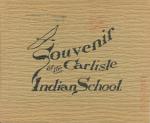
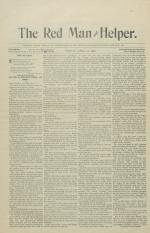
A description of this document is not currently available.
Note: This issue was also published as The Red Man (Vol. 17, No. 40).

An excerpt from the Annual Report of the Commissioner of Indian Affairs to the Secretary of the Interior for the fiscal year ending 1902, containing the Twenty-Third Annual Report of the Carlisle Indian Industrial School. The report, submitted by Superintendent Richard Henry Pratt, includes a school population table and discussions of…
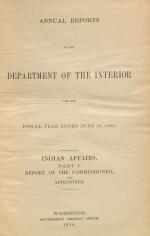
An excerpt from the Annual Report of the Commissioner of Indian Affairs to the Secretary of the Interior for the fiscal year ending 1903, containing the Twenty-Fourth Annual Report of the Carlisle Indian Industrial School. The report, submitted by Superintendent Richard Henry Pratt, includes a school population table and discussions of the…
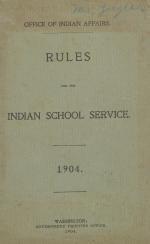
A description of this item is not currently available.
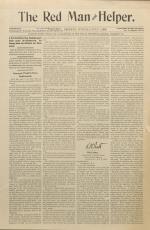
A description of this document is not currently available.
Note: This issue was also published as The Red Man (Vol. 19, No. 47 & 48).
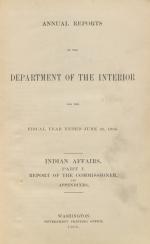
An excerpt from the Annual Report of the Commissioner of Indian Affairs to the Secretary of the Interior for the fiscal year ending 1904, containing the Twenty-Fifth Annual Report of the Carlisle Indian Industrial School. The report, submitted by Superintendent William A. Mercer, includes a school population table and discussions of the outing…
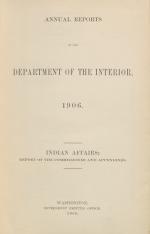
An excerpt from the Annual Report of the Commissioner of Indian Affairs to the Secretary of the Interior for the fiscal year ending 1906, containing the Twenty-Seventh Annual Report of the Carlisle Indian Industrial School. The report, submitted by Superintendent William A. Mercer, includes discussions of health, building projects, agriculture…
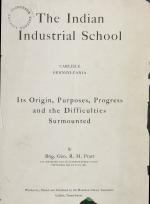
A description of this pamphlet is not currently available.

A catalog originally printed in 1908 by the students at the Carlisle Indian Industrial School. The contents include a list of teachers and staff, an overview of Indian education and brief descriptions of Carlisle’s history and aims. Each industrial training department has a short description. The section on academic departments includes a…
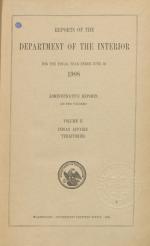
An excerpt from the Annual Report of the Commissioner of Indian Affairs to the Secretary of the Interior for the fiscal year ending 1908, containing the Twenty-Ninth Annual Report of the Carlisle Indian Industrial School. The report includes brief discussions of enrollment statistics, academic and industrial training, the outing program, and…
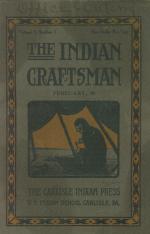
The superintendent of the school described improvements of school buildings, as well as an increase in attendance. Next, appeared a history of the Flathead Indians, accompanied by images from the Flathead Reservation in Montana. F. Shoemaker, M.D. detailed how tuberculosis infections were handled at the school. The following section…

In the opening article, Superintendent Friedman wrote on the success of public and special school in the United States. Next, Glenn S. "Pop" Warner discussed athletics at the school. He addressed questions of recruitment and policy. In the "Legend, Stories, and Customs" sections Carlisle Students told legends and histories of their…
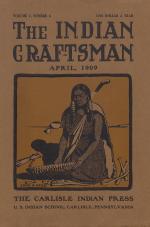
The opening article praised the work of Francis E. Leupp, Commissioner of Indian Affairs. The following article, pulled from the Philadelphia Ledger, featured two Carlisle students. Thomas Saul (Wanyeya) and Reuben Charles (Gwee-yeh-is) were awarded the Gillespie Scholarship and were being trained in the arts. Next, C. J. Crandall…
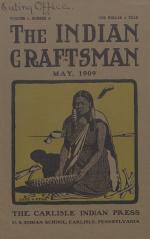
This issue, which commemorates the Commencement Exercises of the Class of 1909, featured speeches highlighting the success of Indian education. Francis E. Leupp, in his address, among many things spoke on the success of the arts at Carlisle. He was followed by Moses E. Clapp, Chairman of the Senate Committee on Indian Affairs. Clapp shared "…
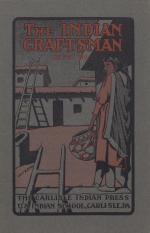
A description of this publication is not currently available.
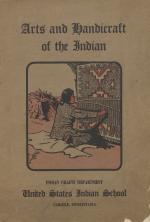
This booklet featured items produced by students at the school for sale to the public…
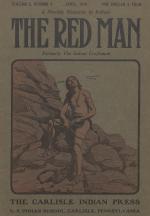
The first article, written by Franz Boas, discussed "Methods in Indian Woodwork." Frank C. Churchill wrote about a council of Ponca, lead by Chief White Eagle and gave an account of the speeches made at the council. Next an article, pulled from the New York Tribune, reported on the improving conditions of Indians across the United…
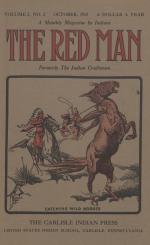
A description of this publication is not currently available.
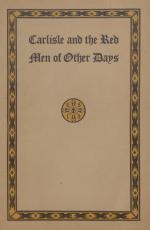
A description of this item is not currently available.
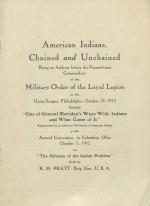
A description of this pamphlet is not currently available.
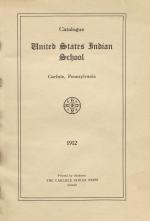
A description of this item is not currently available.
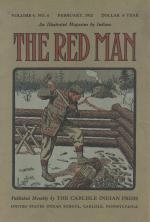
William B. Freer wrote about the second annual Southern Cheyenne and Arapaho Fair held in Watonga. He mentioned that between 2,000 and 2,500 Cheyenne and Arapaho attended the fair. Some of the events discussed were religious services; a lecture on tuberculosis and trachoma; and numerous exhibitions of livestock, produce, and farm practices. The…
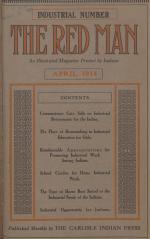
In the opening editorial comment section Commissioner Cato Sells and his industrial program were discussed. Next, E. B. Merritt wrote about industrial opportunities for Indians such as farming, handling of stock, dairying, and other industrial trades. Charles L. Davis, author of the following article, discussed which breed of horse was best…
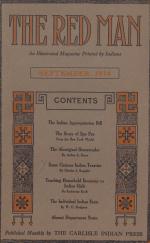
This issue begins with the press comments section. The Indian Appropriation Bill, which appropriated 1.5 million dollars from Indian funds to improve health conditions, education, and agriculture, was discussed. The next article, which was pulled from The New York World, discussed the Story of Spo-Pee, “the silent Indian”. Arthur L.…
